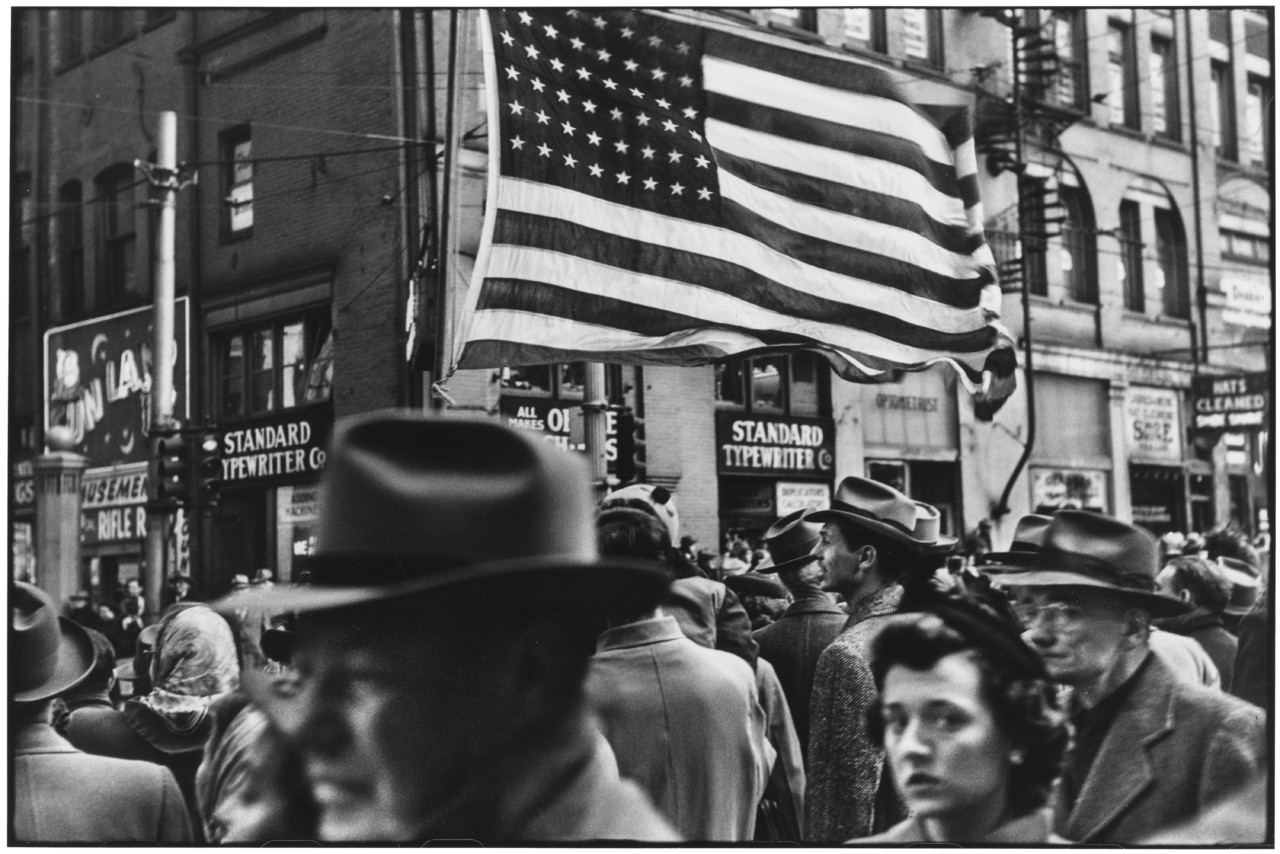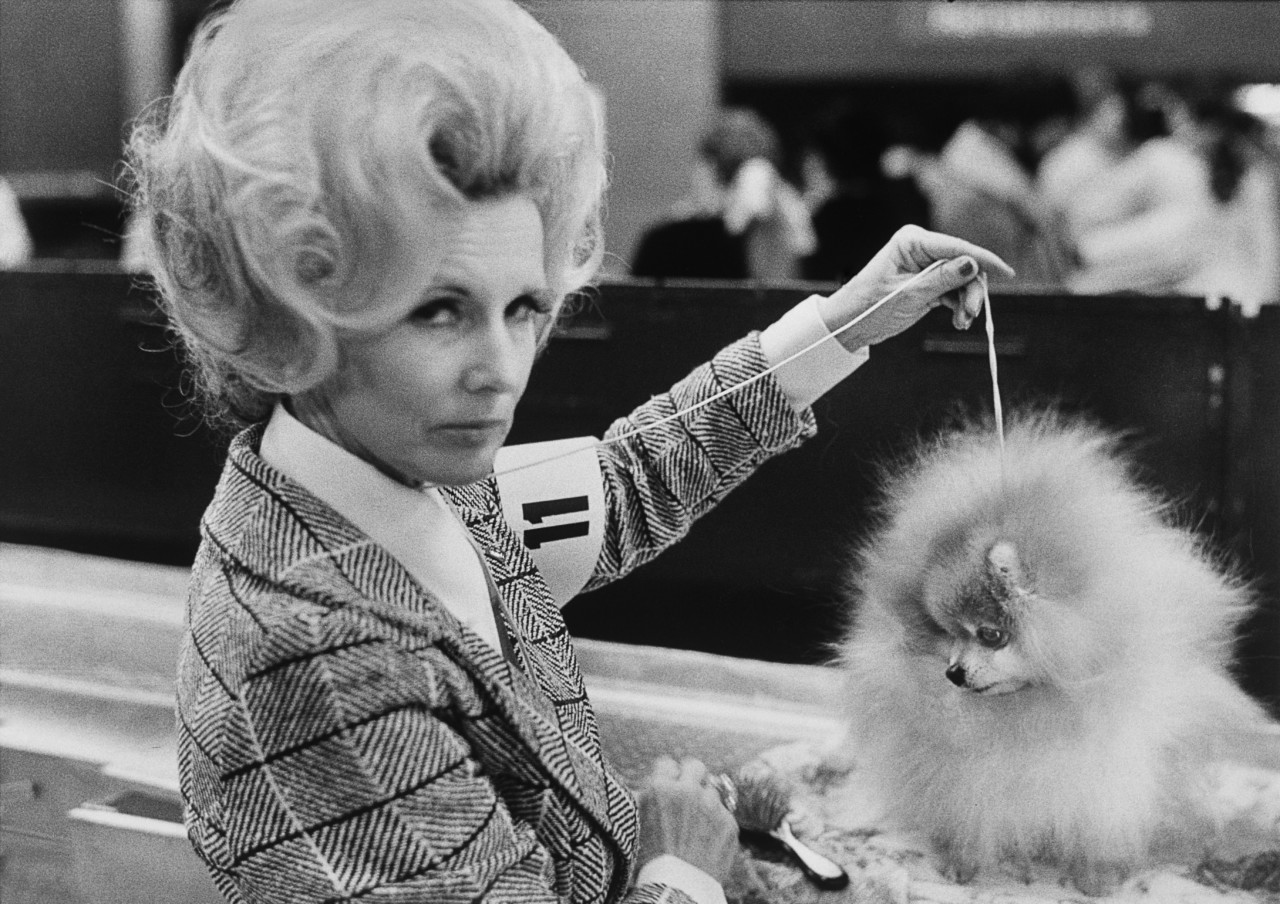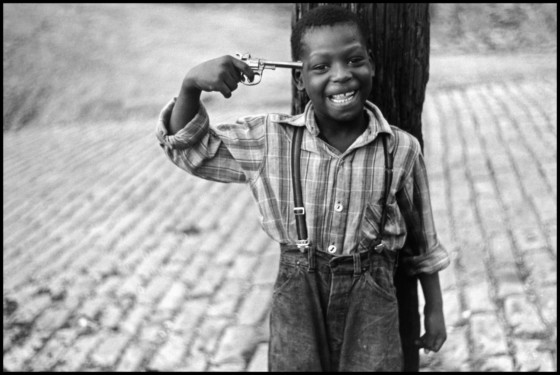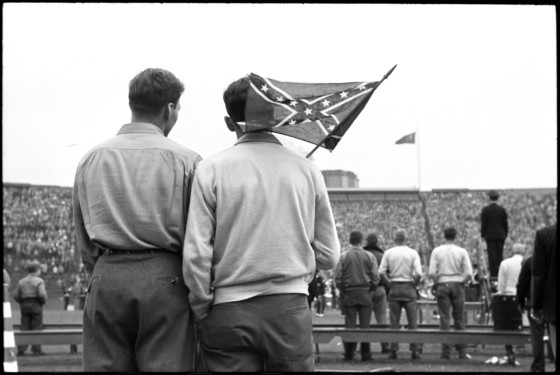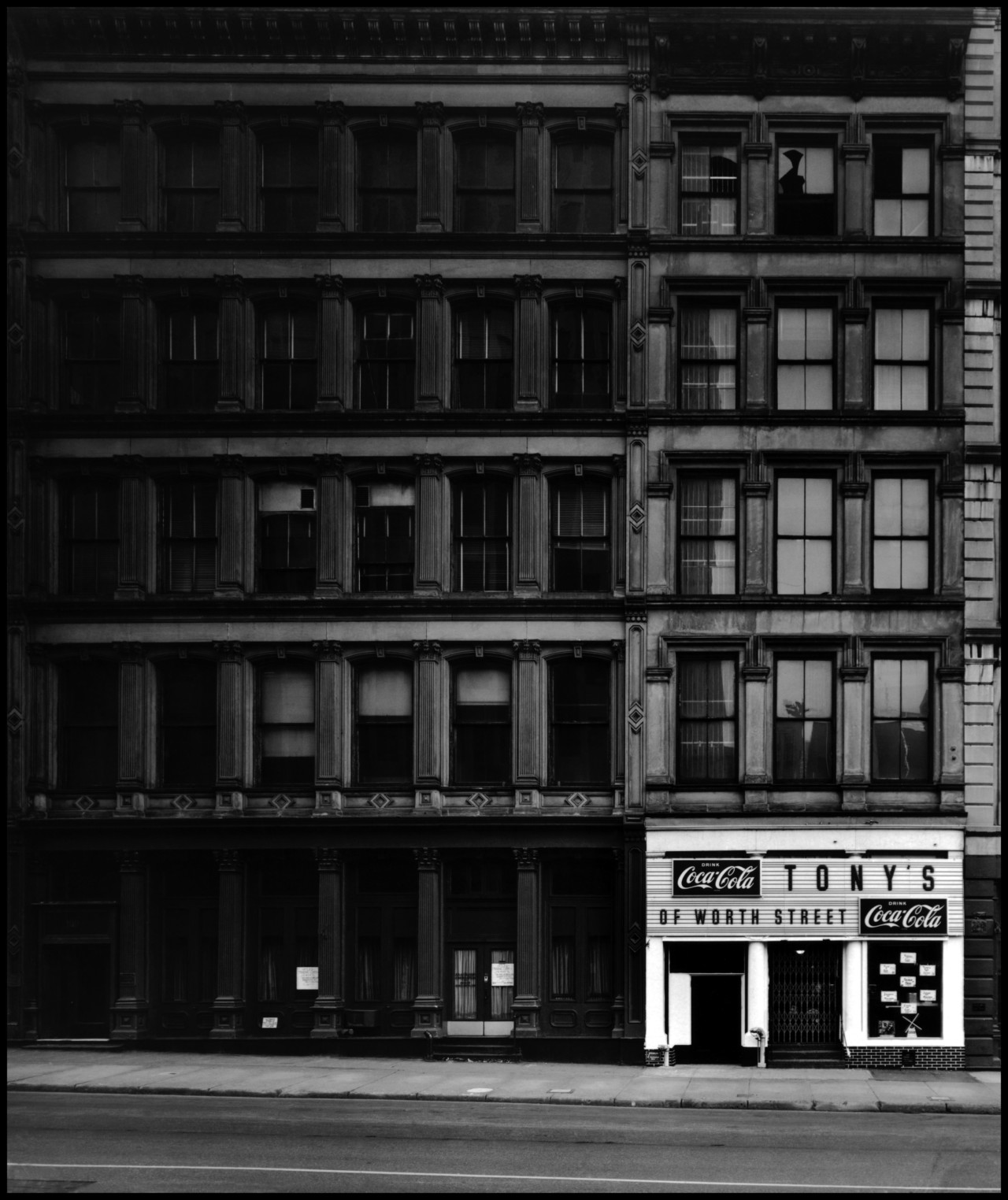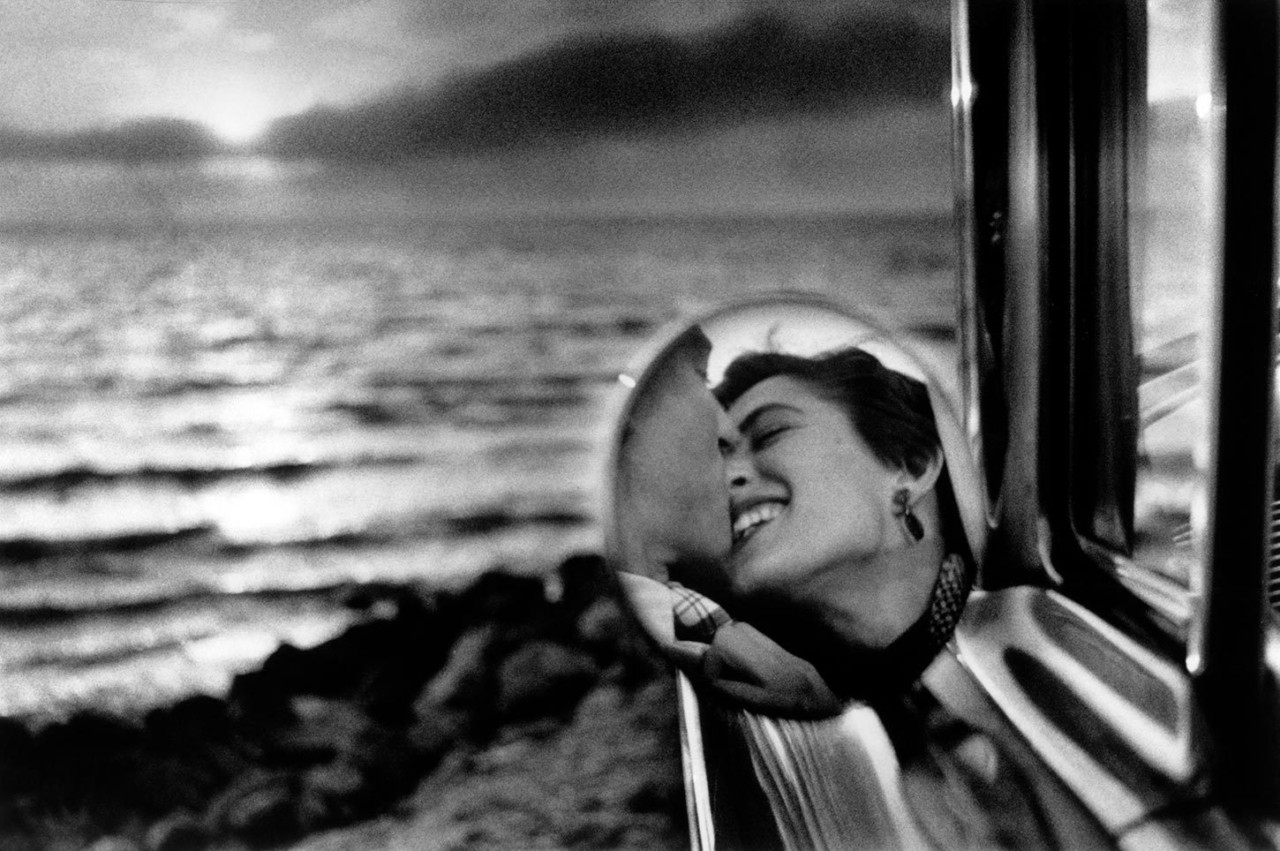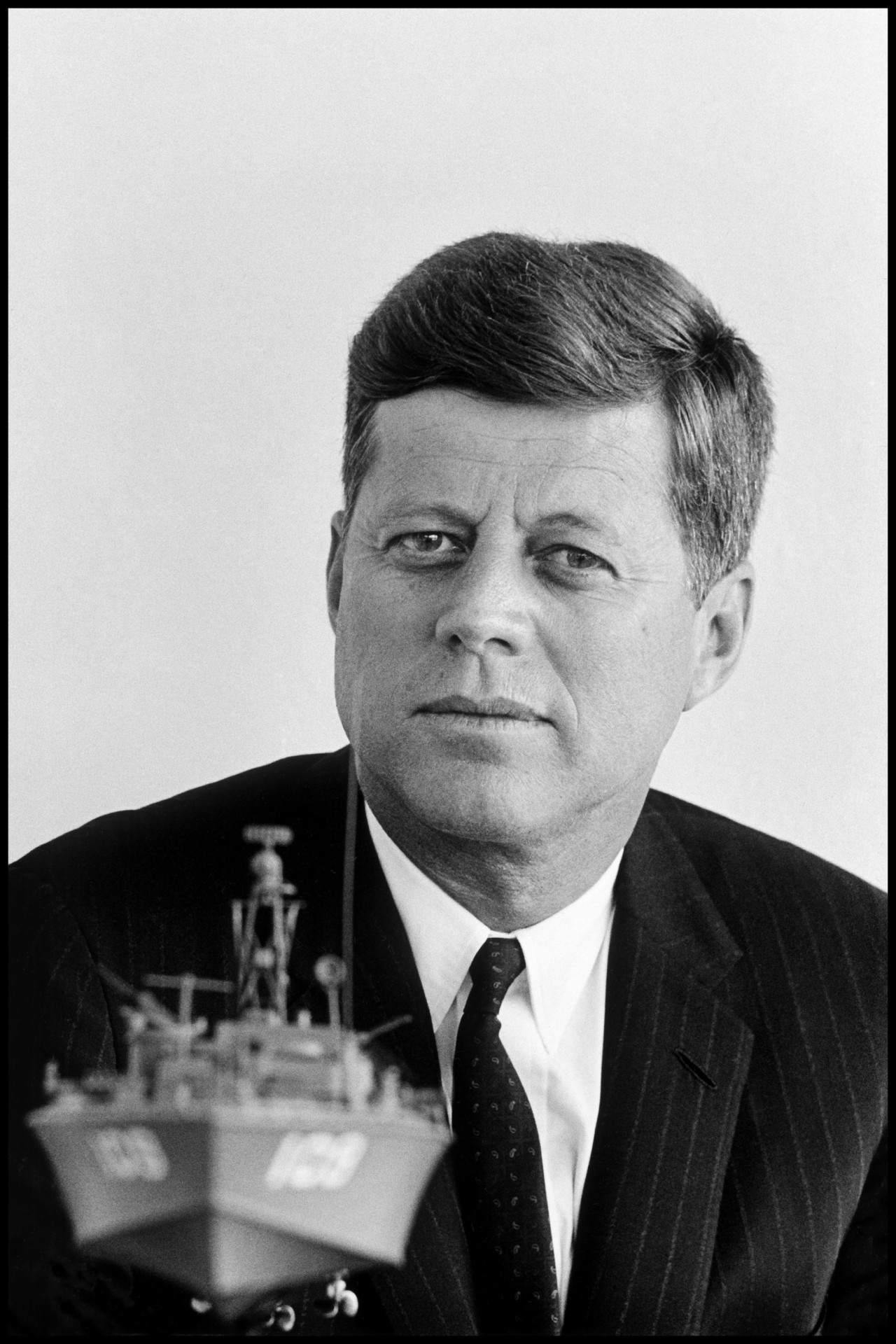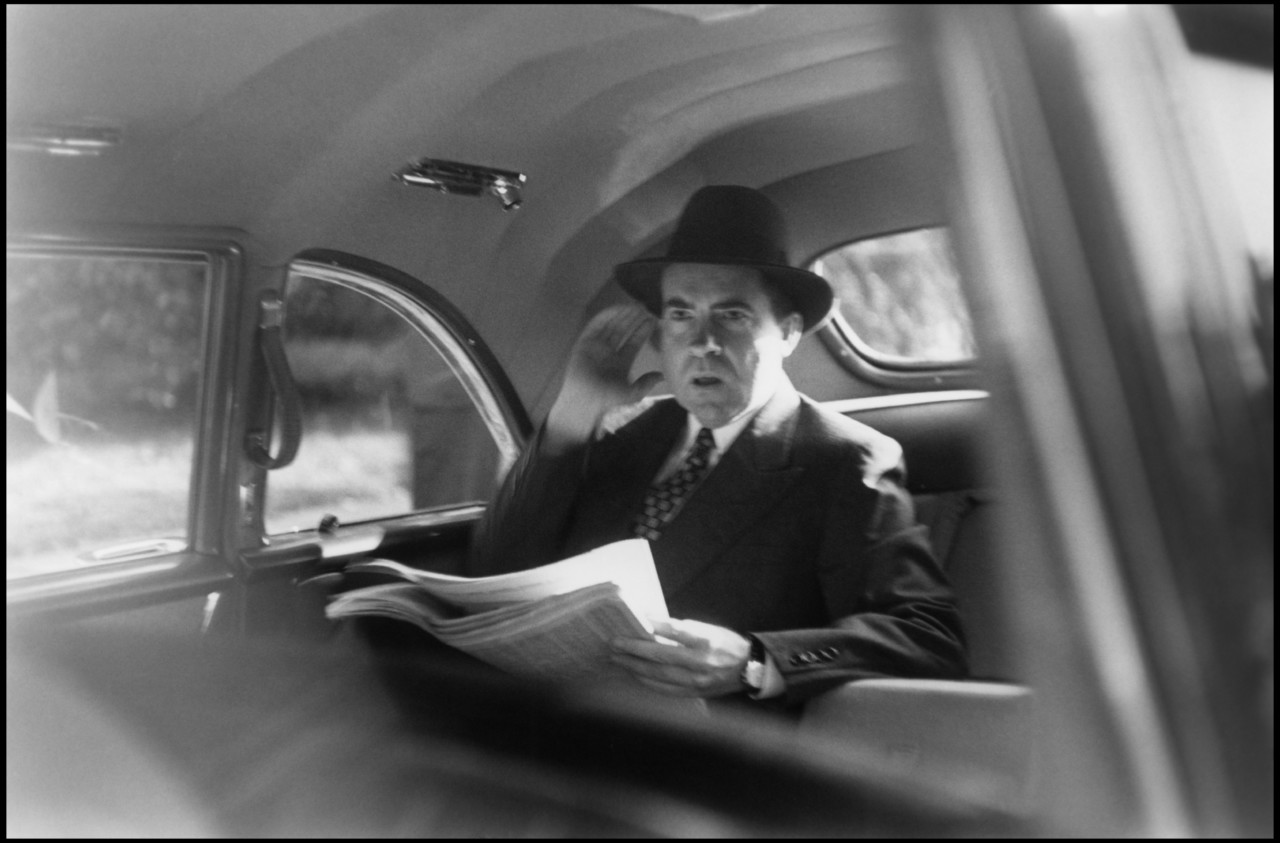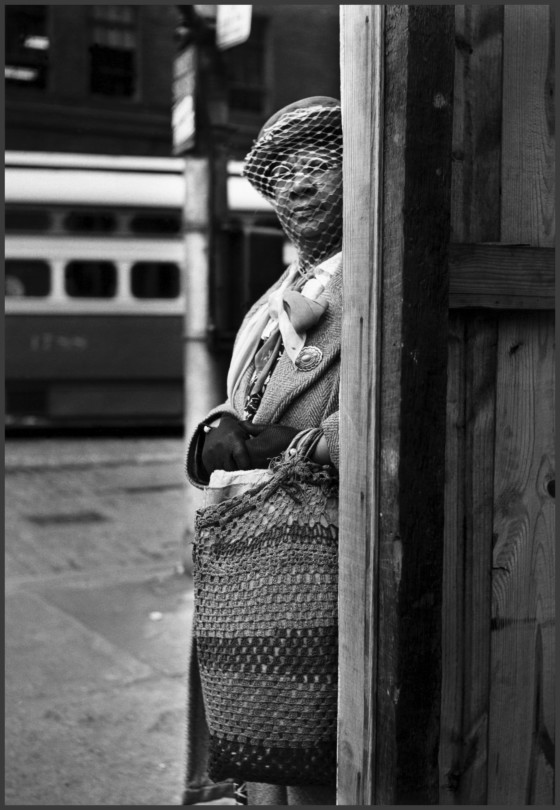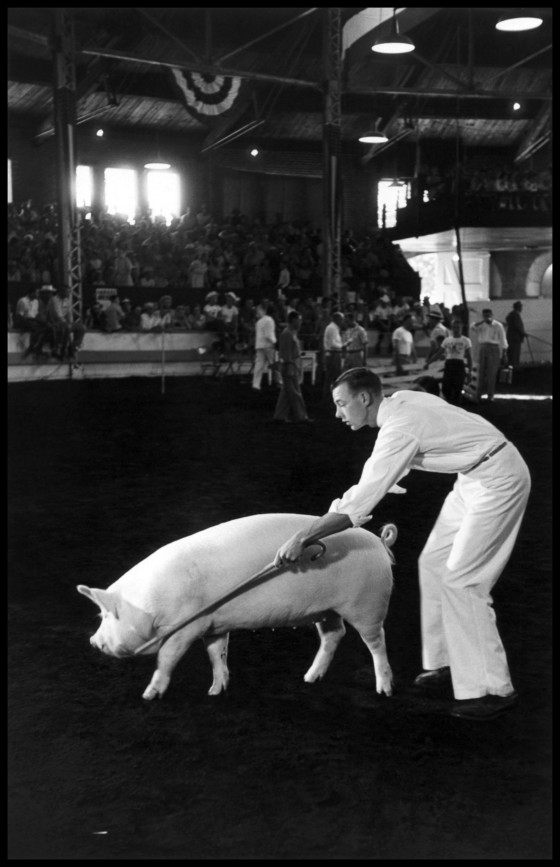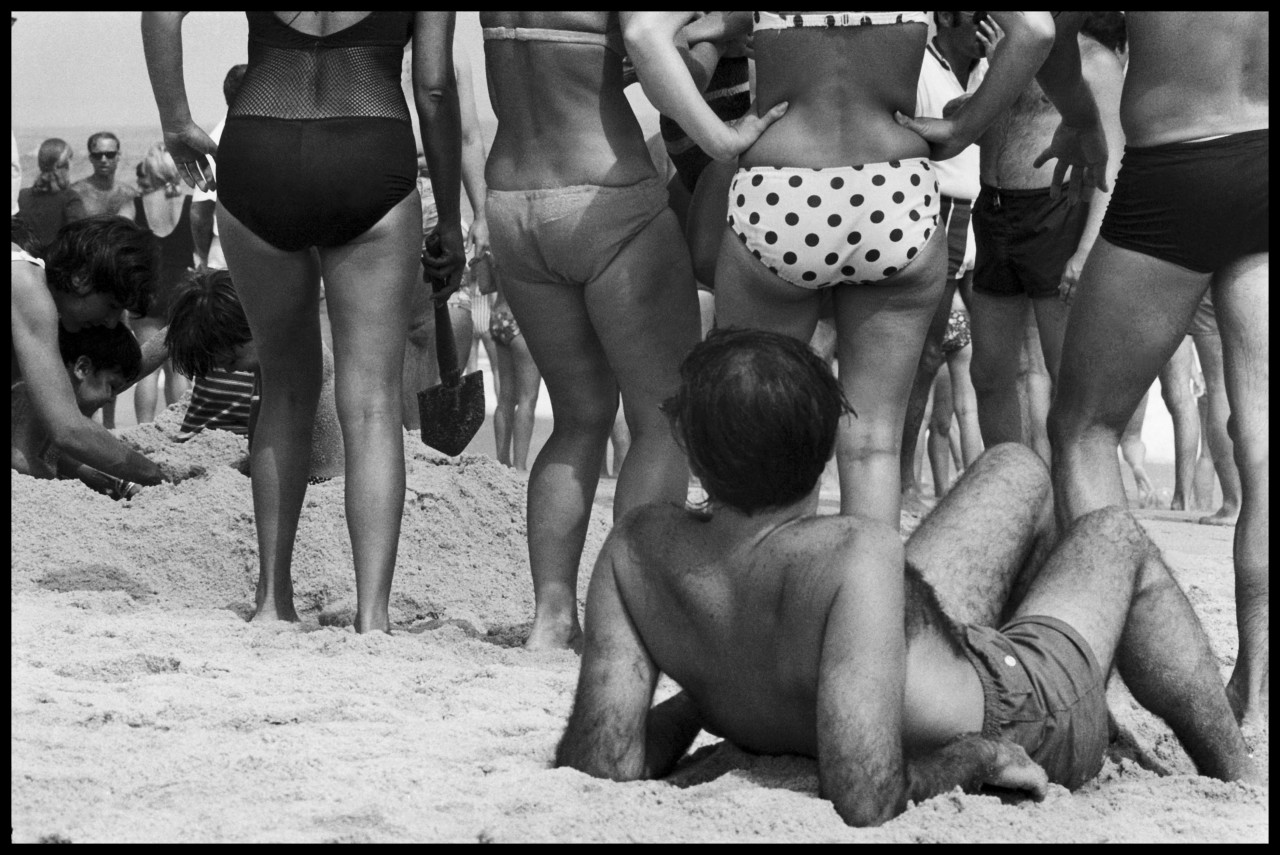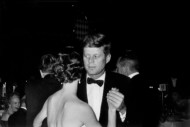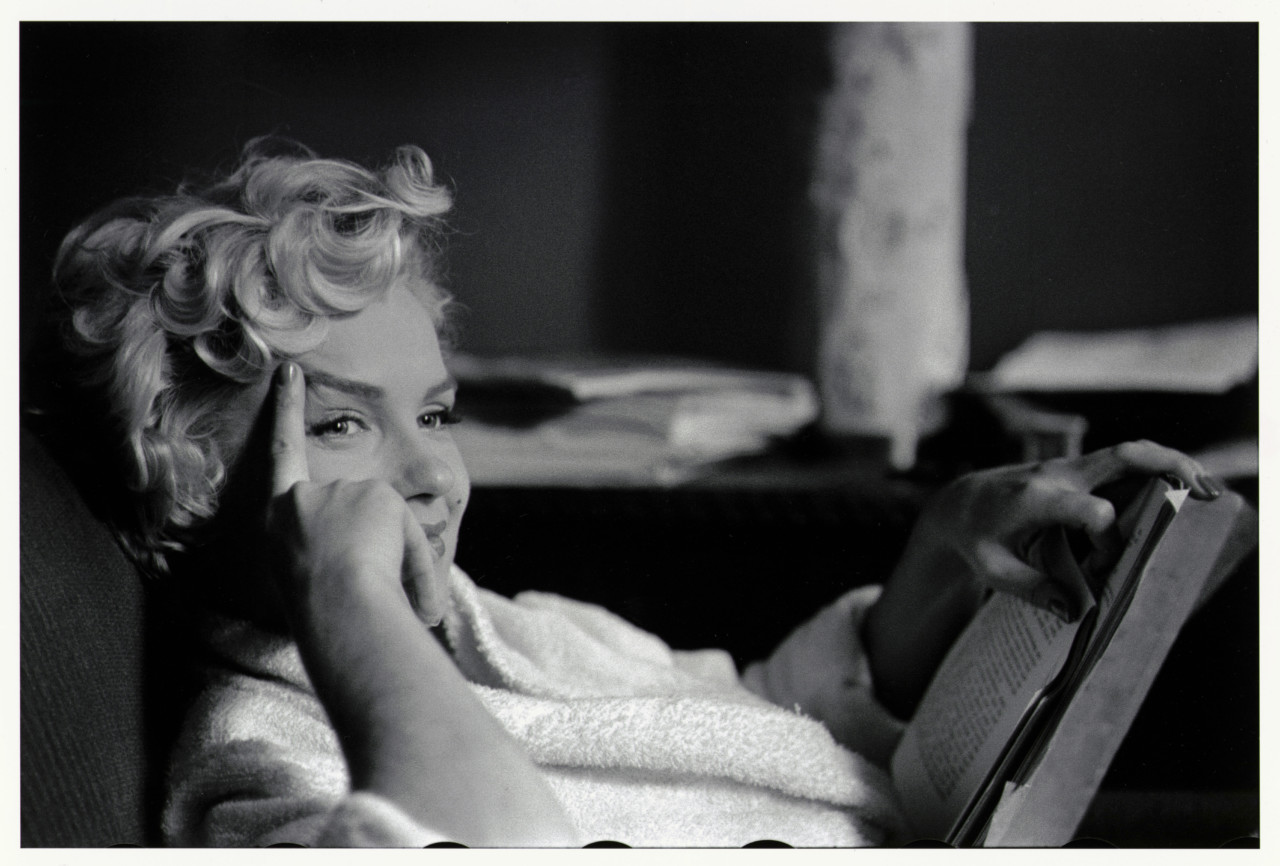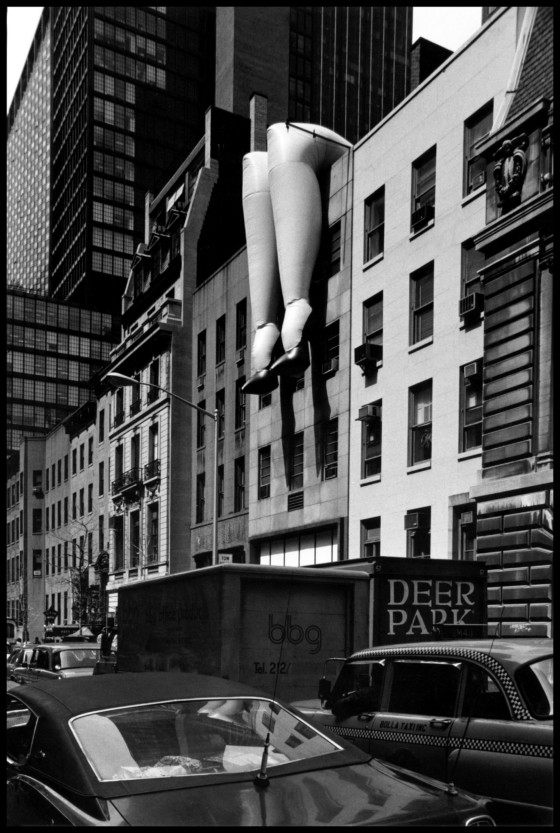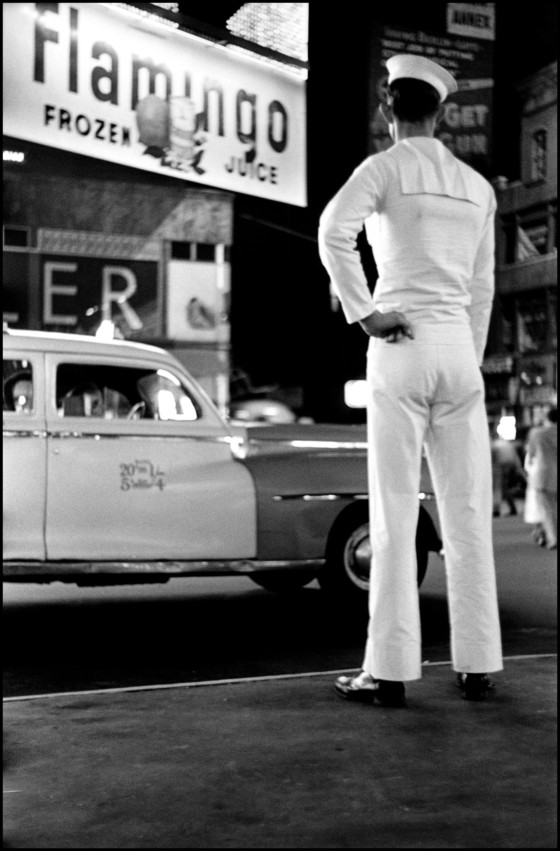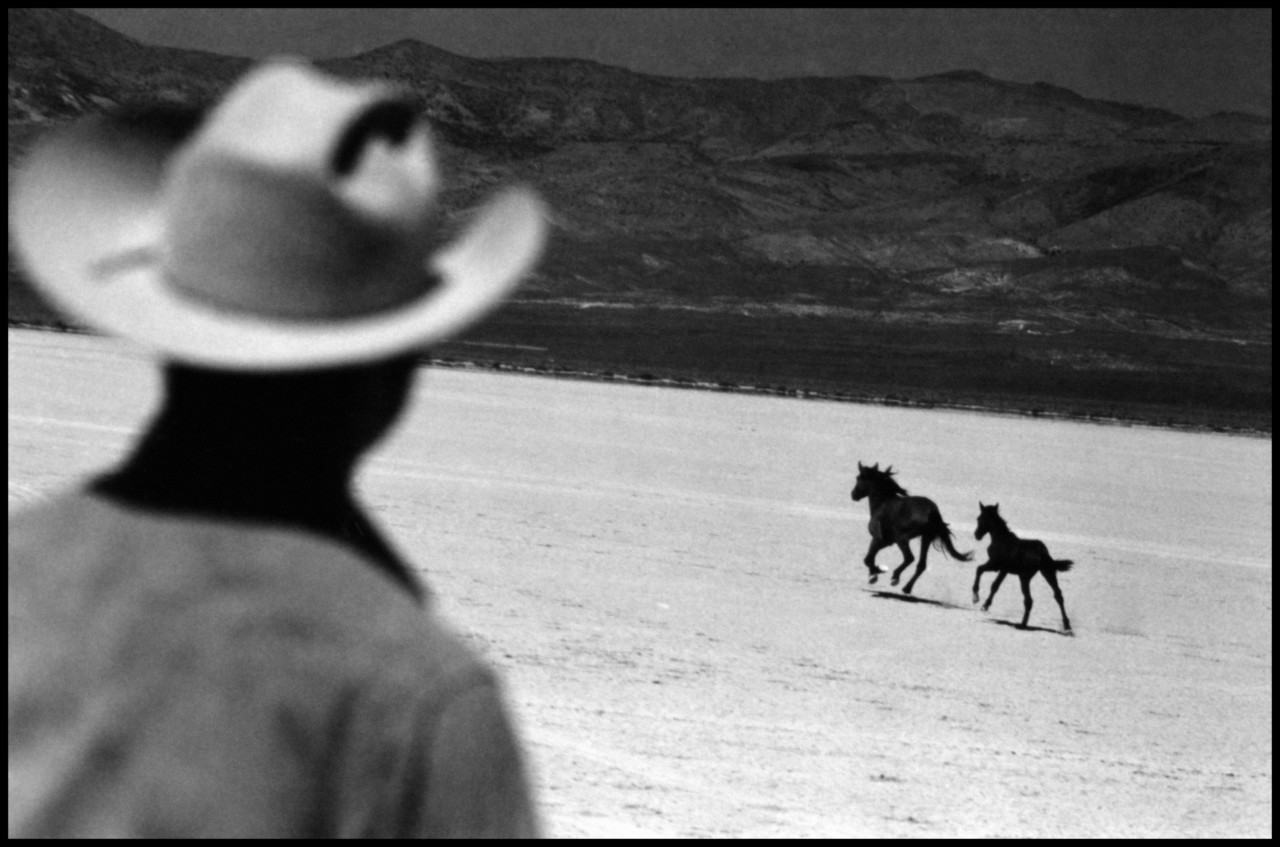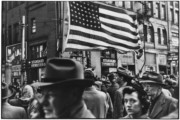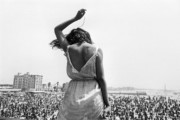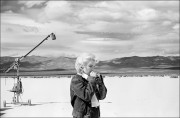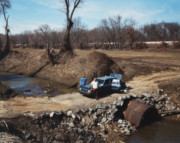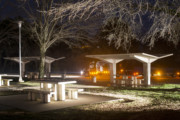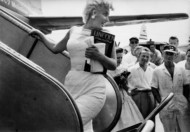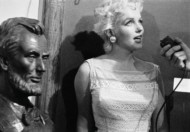Elliott Erwitt’s America
Following the legendary photographer’s 90th birthday, thoughts on his vision of America as an emigree and the nation’s effect on his work
To mark the photographer’s 90th year, Vaughn Wallace considers Elliott Erwitt’s work in America, reflecting both upon how the nation and its inhabitants fed his talent, and how his work now stands as a testament to what it means to be American. From grandstanding politicians and celebrity culture to the daily realities of street corners and the working man, Erwitt’s vision of the nation manages to be both unique in perspective and universal in influence.
A unique collection of posters celebrating Erwitt’s work in America is now available on the Magnum Shop, as part of the Elliott Erwitt Collection.
Elliott Erwitt is 90. A living, working legend. To consider the magnitude of a career as vast and prominent as Elliott’s, we start at the beginning. He was born in Paris to Russian parents on July 26, 1928, and given the name Elio. At the age of 11, his family fled the impending Second World War and emigrated to the United States on one of the last commercial boats out of France. They first settled in New York, but soon Elliott found himself relocating to the west with his father, arriving in California and enrolling in Hollywood High School.
America provided the spark – the subtle but poignant ignition of a flame that has continued to burn throughout Elliott’s career. The American people, the landscapes, the structure and the happenstances – all have fuelled Elliott’s photographic eye in a way other places couldn’t. The spark that America provided Elliott from his earliest years in the country was, in his succinct words, “good for pictures.”
Working stints in a bakery, soda fountain and commercial darkroom, Elliott gained his photographic footing in Los Angeles, taking instructional classes at Los Angeles City College, where he learned studio lighting and other skills that would make appearances in later photographic works. Looking backwards, one is struck by Elliott’s sheer youth as he established the foundations of his career. At 20, he struck up a friendship with a then-unknown Swiss fashion photographer named Robert Frank. At 21, Elliott secured a portfolio review with Edward Steichen, which led to his first commercial assignment from Roy Stryker (of FSA lore) in Pittsburgh.
It was at this point in Elliott’s photographic arc that life accelerated; also, the point at which a humanist spark began to steer his ship. Elliott travelled extensively around America before being drafted into US Army during The Korean War and relocated to Europe, where his photos of a less-than-thrilling military life, under the title ‘Bed and Boredom’, won him acclaim in LIFE Magazine. “I didn’t have any preconceived notions,” Elliott reminded me as I spoke with him earlier this summer. “I just carried a camera and took pictures.”
While it is easy to recite a luminary’s curriculum vitae, it is harder to examine the feelings Elliott’s images evoke in us as viewers; why Elliott’s explorations of his world can – time and time again – cause us to pause and explore our own. Perhaps Elliott’s photographs of America stir us because they are so intertwined with the story of America itself.
A seven-decade career of working around the country affords Elliott the distinct privilege of a life that intersects the fabric of the United States’ mythos. Elliott’s archives are the ruminations of a professional life spent within striking distance of key events of mid-century America’s history – at 26 years old, riding in the back of a car with a (shockingly youthful) Vice President Richard Nixon, later, hanging out on the set of The Misfits and spending days in the beautiful chaos of a young Marilyn Monroe’s entourage, or photographing, in extreme proximity, John F. Kennedy (as Presidential hopeful, the President-elect, the President, and as the late President), and Eisenhower, Johnson, Bush and Obama.
Asking him about his portraits, Elliott reminded me that, whether a movie star or normal person, it’s “just a matter of getting close and making a picture. It doesn’t matter who.”
The camera, he says, takes away nervousness and any preconceptions. “It’s just you and the subject.” His views on politics, and indeed politicians, as captured in the book Personal Exposuresare typically wry, “My pictures are political in a way. They are intended to comment on the human comedy, and isn’t that politics? If I were asked whom I dislike more, Nixon or Johnson, I’d be hard-pressed to give a clear-cut answer. Johnson was vulgar but ultimately a notable president and Nixon was unscrupulous, but does that show in the pictures? You tell me.”
His long career encompasses the many smaller arcs of much American culture. But a dig through his archive is like a dig through an antique shop. Buried amongst the flashiest images of recognizable icons are also quieter, powerful mementos of the American dream – the reminders of our own humanity and the distinct markers that characterise us as “American.” The quiet moments on streets of New York City, Reno, or Fort Worth. The portraits of fellow, average humans – so distinct in the most Erwitt fashion.
Whether shooting bathers on a Long Island Beach, cowboys on the plains of Wyoming, veterans in a parade, or children at a county fair in Iowa, his eye carries a consistency in how he engages with the quintessential spirit of America. Elliott finds the beautiful serendipity of life seemingly with ease – a camera in hand at the right moment to make a frame that tells us something quite universal about our national identity, whatever that may be.
His eye for the less flashy side of American iconography is conveyed in his book Pittsburgh, which stands in contrast to the star-studded People, the two titles neatly conveying his ability to see beauty in wildly different aspects of the American existence. Rich or poor, president or pauper, celebrity or celibate — all are equalized in front of Elliott, who, bless his heart, doesn’t see any of them differently from the other.
Elliott attributes part of his success to the open spirit of Americans. In the US, he could work unencumbered, photographing Americans as they went about their daily routines. Europeans weren’t typically as accessible and relaxed.
“Americans are more open to being photographed,” he said. His love of working in America and with Americans comes over in his ruminations on the American South, where even the peoples’ masked hardness held an allure for him, “I have a strong attraction to the American South. People there have this marvelous exterior, wonderful manners, warm friendliness—until you touch on things you’re not supposed to touch on. Then you see the hardness beneath the mask of nice manners. But I love that surface, because, being a photographer, I deal with surfaces more than anything else. What appears to be is what I deal with.”
As an editor who has studied Elliott’s photographs throughout my own career, I look at his work with an envy usually reserved for the moral hero in allegorical theatre, or perhaps any of Hemingway’s novels: a desire not just to live life well, but to live life while experiencing it with the same tenor, vigor and passion as Elliott manages.
When people hear that Elliott is 90 years old, they do a double take — a mix of amusement and bewilderment. People are incredulous that he hasn’t ‘retired’, but when one lives the photographic life, what does retirement even look like? Elliott’s thriving. The man has published four books in the last six years.
As I visited him this spring at his studio on Central Park West (where he’s lived and worked for more than 50 years), we shared lunch amongst uneven stacks of hundreds of slightly curling, vintage proofs. For the last several months, Elliott’s been hard at work on a new project. He’s in good humor surrounded by his work, always thinking about creation and what he will continue to show with his vision.
And so at 90 years we mark Elliott’s impressive career: a legacy defined by precise observation of the human — and American — experience.


